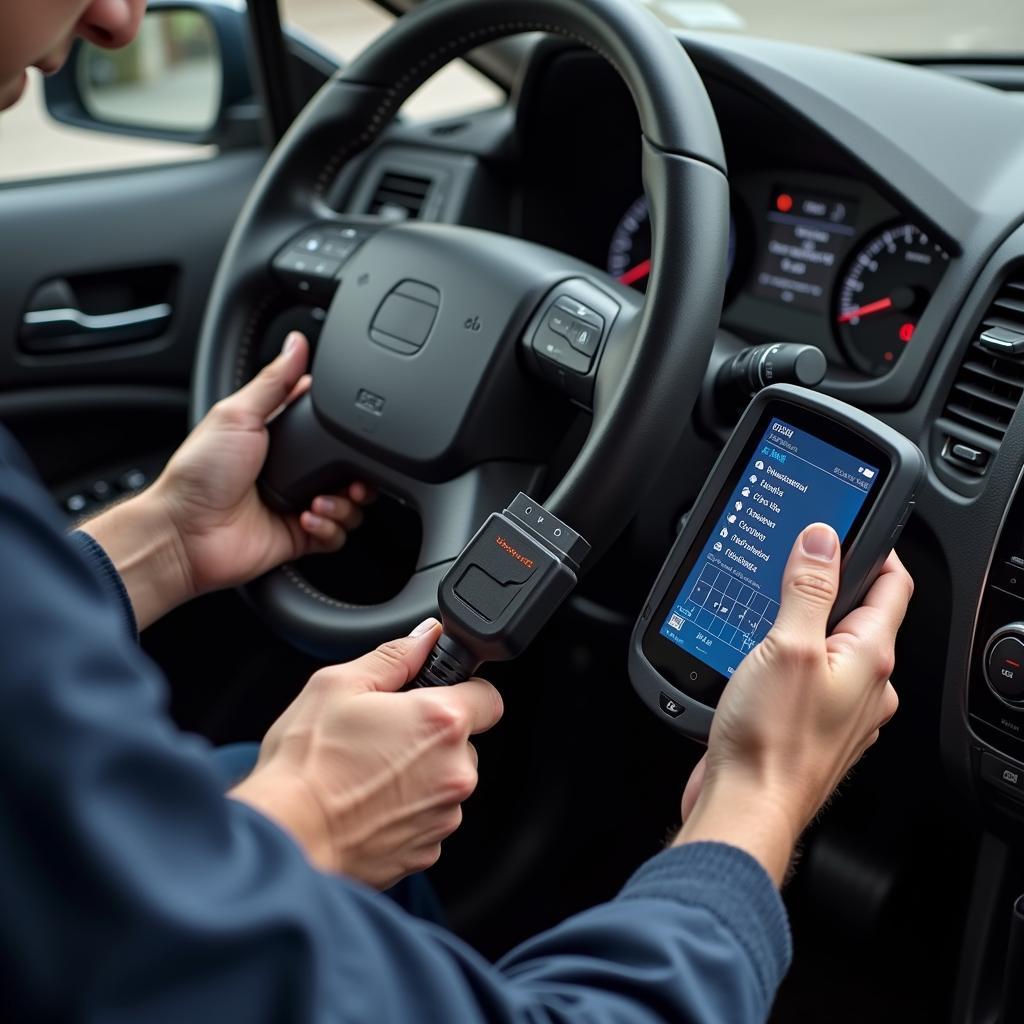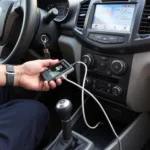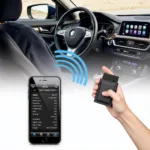Starting your car using an OBD2 scanner might sound like something out of a spy movie, but the reality is a little less dramatic. While you can’t typically start your car directly through an OBD2 port, this powerful tool can be incredibly useful in diagnosing and potentially resolving starting problems. Let’s dive into how OBD2 scanners work their magic and how they can help you get your car up and running.
Understanding the OBD2 Port and Starting Issues
Your car’s OBD2 port, often located under the dashboard on the driver’s side, acts as a central communication hub for its electronic systems. It provides a wealth of data about your engine’s performance, emissions, and potential issues. When it comes to starting problems, the OBD2 scanner can be your best friend, helping you pinpoint the culprit behind those frustrating mornings.
Common Car Starting Problems an OBD2 Scanner Can Help Diagnose
A variety of issues can prevent your car from starting, ranging from a dead battery to a faulty fuel pump. Here are some common culprits an OBD2 scanner can help identify:
- Battery Problems: A weak or dead battery is a leading cause of starting problems. An OBD2 scanner can check your battery voltage and charging system to determine if this is the issue.
- Faulty Starter Motor: If you hear a clicking sound when you turn the key, a failing starter motor might be the problem. While an OBD2 scanner can’t diagnose a faulty starter directly, it can often detect related electrical issues that point to the starter motor as the source of the problem.
- Fuel System Issues: Problems with the fuel pump, fuel filter, or fuel injectors can prevent your engine from getting the fuel it needs to start. An OBD2 scanner can check fuel pressure and injector performance, helping you pinpoint the issue.
- Sensor Malfunctions: Modern cars rely on various sensors to function correctly. A malfunctioning crankshaft position sensor or camshaft position sensor, for example, can prevent your car from starting. An OBD2 scanner can read sensor data and flag any abnormalities.
- Immobilizer System Faults: Many modern cars are equipped with immobilizer systems that prevent theft by only allowing the engine to start with a recognized key. If there’s a fault in this system, your car might not start. An OBD2 scanner can often communicate with the immobilizer system to identify and sometimes even clear these faults.
How to Use an OBD2 Scanner for Starting Problems
Using an OBD2 scanner is straightforward. Simply plug the scanner into your car’s OBD2 port, turn the ignition to the “on” position (without starting the engine), and follow the on-screen prompts. The scanner will read the error codes stored in your car’s computer, which you can then cross-reference with a code list or online database to understand the problem.
Beyond Diagnosis: Using an OBD2 Scanner for Troubleshooting
While an OBD2 scanner is an excellent diagnostic tool, it can also be a valuable asset for troubleshooting starting problems:
- Clearing Error Codes: After addressing a starting issue, you can use the OBD2 scanner to clear the error codes from your car’s computer. This helps ensure the problem is indeed resolved and prevents old codes from triggering false alarms.
- Monitoring Live Data: Many OBD2 scanners allow you to monitor live data streams from your car’s sensors. This can be helpful in observing sensor readings in real-time, potentially revealing intermittent issues that might be contributing to starting difficulties.
When to Seek Professional Help
While an OBD2 scanner is a powerful tool, it’s essential to remember that it doesn’t replace the expertise of a qualified mechanic. If you’re uncomfortable working on your car or the problem persists despite your efforts, it’s best to consult a professional. They have the knowledge, experience, and specialized tools to diagnose and repair complex car issues effectively.
Choosing the Right OBD2 Scanner
Selecting the right OBD2 scanner for your needs depends on your budget and technical expertise. Basic code readers are affordable and sufficient for reading and clearing error codes. More advanced scanners offer live data monitoring, graphing capabilities, and even bidirectional control, allowing you to perform specific tests on your car’s systems.
Conclusion
While an OBD2 scanner won’t magically start your car, it can be an invaluable tool in identifying and understanding the root cause of starting problems. By providing a window into your car’s electronic systems, an OBD2 scanner empowers you to take control of your car’s health and make informed decisions about maintenance and repairs. Whether you’re a DIY enthusiast or prefer leaving repairs to the professionals, an OBD2 scanner is a worthwhile investment for any car owner.


